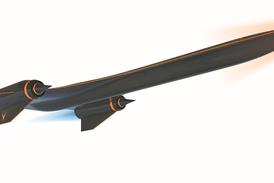The Single European Sky is a fantastic vision, but like all visions it will take attention to detail to achieve it. There is no magic wand
The Single European Sky (SES) train is off the buffers and has begun slowly to accelerate out of the station. That much is clear from a stimulating ATC Maastricht conference this year, at which air traffic management (ATM) policy-makers, regulators, equipment and software manufacturers, air navigation service providers (ANSP) and airport executives were gathered.
The users, the airlines and general aviation people, were less in evidence. But one thing was obvious: the world has changed, and this time the whole ATM industry and the ANSPs - and even the regulators - are resolved that it is around the users' needs, and their desire for a combination of cost-efficiency, capacity and safety, that the whole system has to be designed. Looking from another perspective, this time it is not to be the regulators and the ATM equipment manufacturers that will look at what they have and see what they can do with it. The SES objective has been established and accepted as a concept, but this time all the stakeholders have gathered, and together they are going back to the drawing board. Well, not quite, but nearly.
Harnessing the accumulated experience of the regulators and ANSPs, the energy and ingenuity of private industry, and with the input of the users, an SES definition phase known as Sesame will open in April. Out of this should come a "master plan" that, by 2007, will provide the shape of European ATM for the next 30 years. But far more than that: whatever is decided in Europe will also have been designed with a global system in mind, and other big players like the US Federal Aviation Administration will be partners in its formation.
If this sounds worryingly like a classic fairy tale of the type that ends "and they all lived happily ever after", perhaps it is because Sesame was the password that poor Ali Baba discovered; it gained him entrance to the cave containing undreamed-of riches. But as in all fairy stories, the path leading to "happy ever after" is a hard one.
So to get back to earth - while continuing to take advantage of storytelling - we return to the train analogy: the imagery it evokes has interesting parallels with what is happening. The SES train, as it moves away, has two locomotives pulling it: the European Commission and Eurocontrol. And there are two pushing it - the manufacturers and the service users. Between the locomotive units, the train is composed of a rag-bag of disparate rolling stock, ranging from quite smart carriages - but with fading livery - to ancient cattle trucks and coal wagons, some of them with their brakes partially applied. These are Europe's ANSPs. The only thing they have in common is that they are on the same track. But what have we here? A few kilometres out of the station the track runs out. There are teams of engineers frantically laying new track across formerly untravelled territory, but the train is catching them up...
And that is how it is. To complete the railway analogy, the track represents the regulatory system that should provide commonality of direction and standards. And it is true that this has not yet been laid - except for the part near the station, most of which already existed.
Enough of railways. An example of the problems that have yet to ambush progress is the ongoing process of defining what Eurocontrol calls the "building blocks" of the new SES - the "functional airspace block" (FAB). This is a block of airspace designed with only one consideration: it is a sector that, in any given part of the sky, will be the most efficient shape for air traffic management. Out go considerations like national borders, sovereign airspace, and flight information regions based on national control. But also out with the old nationally based airspace delineations goes the old system for deciding who is responsible for regulating, overseeing and applying law in given parts of the sky. Since many FABs will encompass more than one country, the issue is real.
So who will be the legal safety and standards overseer for the SES? There can only be one. Eurocontrol is not a regulator, it is a forum of expertise and policy facilitation. The European Commission may be a lawmaker but it does not have ATM expertise. The clear answer is that it must be the European Aviation Safety Agency (EASA), the Commission's delegated agency for safety oversight. The only problem is that EASA is new and under-resourced for its existing tasks. It must be provided with the resources to take on this task as well, even if that cannot be done overnight. Otherwise the SES will not get to live happily ever after.
Source: Flight International























